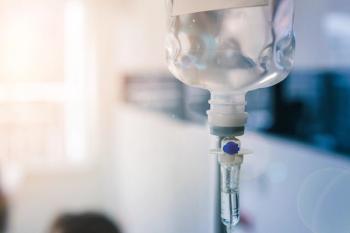
Is It PMS or PMDD?
It is 1 week before a woman?s menstrual period, and suddenly "Dr. Jekyll" turns into "Mrs. Hyde." She no longer has pleasant days at work and calm dinners at home. Instead, her life turns into angry outbursts at family members, clashes with coworkers, and a roller coaster of emotions. Even the family dog needs to take cover this week! Is she having symptoms of PMS? She may actually be having symptoms of PMDD.
What Is PMDD?
PMDD stands for premenstrual dysphoric disorder. It is a more severe form of PMS (premenstrual syndrome). PMS affects nearly half of all women, but PMDD affects 1 in 20 women who have a regular menstrual cycle. PMDD involves severe mood changes and physical symptoms that interfere with everyday life. For both conditions, symptoms begin the week before the woman?s menstrual period and disappear a few days after it starts.
What Is the Difference Between PMDD and PMS?
Although many of the symptoms are similar for PMS and PMDD, PMDD symptoms are worse. Women with these symptoms often feel out of control and feel that they cannot handle their symptoms. A doctor will make the diagnosis of PMDD if 5 or more of certain symptoms are present. These symptoms must occur during the week before the menstrual period and disappear a few days after it starts in 2 menstrual cycles in a row. Here are the possible symptoms:
- Irritability
- Tension
- Decreased interest in normal activities
- Depressed mood
- Lethargy (a feeling that nothing matters)
- Mood swings
- Difficulty concentrating
- Insomnia (not being able to sleep) or hypersomnia (sleeping too much)
- Significant change in appetite
- Feeling of being overwhelmed
- Physical symptoms, such as bloating and breast tenderness
For the doctor to make the diagnosis of PMDD, the woman must have at least 1 of the following 4 symptoms: irritability, tension, depressed mood, or mood swings. The symptoms also must be severe enough to interfere with daily activities and personal interactions.
Can PMDD Be Prevented?
Because the exact cause of PMDD is unknown, it is difficult to prevent PMDD. Some experts think that the symptoms are caused by hormonal changes. Other researchers have found a connection between PMDD symptoms and the levels of a neurotrans-mitter in the brain, called serotonin.
Can PMDD Be Treated?
Although PMS and PMDD cannot be cured, they can be controlled. Less severe premenstrual symptoms can be controlled with lifestyle changes and medications. Here are helpful hints for controlling minor symptoms:
- Exercise regularly
- Quit smoking
- Eat a well-balanced diet; reduce salt and refined sugar
- Take a daily multivitamin and adequate calcium
- Reduce intake of caffeine and alcohol
- Get enough sleep
- Reduce stress
- Use over-the-counter drugs, such as ibuprofen, to control cramping
- Discuss with a doctor the use of birth control pills or other medications to control premenstrual symptoms
For severe symptoms?particularly irritability, depressed mood, and tension?only prescription drugs will provide relief. Prozac is an antide-pressant that is approved by the Food and Drug Administration for the treatment of PMDD. Other similar drugs, such as Zoloft or Effexor, also may be effective in the treatment of PMDD.
How Do I Determine Whether I Have PMS or PMDD?
Keeping a diary of symptoms is a helpful way to track changes before a menstrual cycle. The diary should contain the dates of the symptoms, the type of symptoms, the severity of the symptoms, and the dates of the menstrual period. Both emotional and physical symptoms should be recorded.
After a woman has tracked her symptoms for 2 or 3 cycles, a doctor can review the symptoms to determine whether they are symptoms of PMS or PMDD. The doctor also will perform an examination to rule out other medical problems, such as depression.
Where Can I Find Support?
In the past, PMS was the focus of laughter and jokes. Women who admitted to having premenstrual symptoms or who were unable to hide them were stereotyped as unstable. To prevent being laughed at, most women never discussed pre-menstrual symptoms with their doctor, pharmacist, or family. Now that PMS and PMDD are recognized as serious conditions, women should feel free to discuss their symptoms. Gaining support and understanding from health care professionals and family is the first step in finding relief from the symptoms of these serious conditions.
Newsletter
Stay informed on drug updates, treatment guidelines, and pharmacy practice trends—subscribe to Pharmacy Times for weekly clinical insights.


















































































































































































































